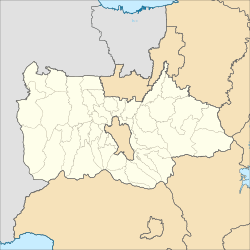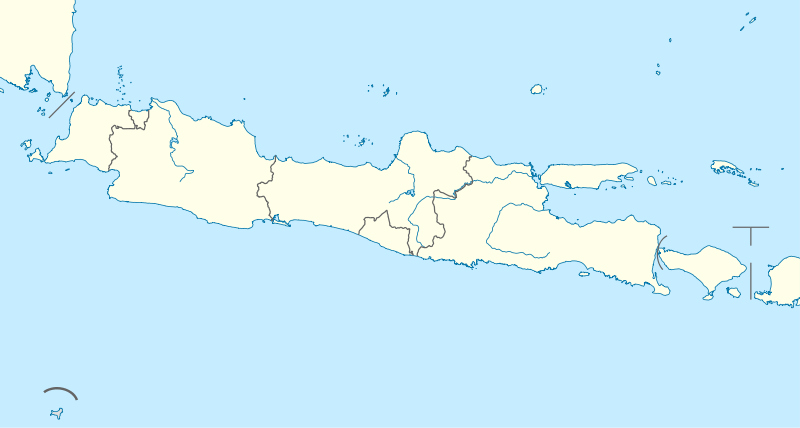Cibinong
| Cibinong ᮎᮤᮘᮤᮔᮧᮀ | |
|---|---|
| Town | |
 A road at Cibinong in 1918 | |
 Cibinong  Cibinong Cibinong (Java)  Cibinong Cibinong (Indonesia) | |
| Coordinates: 6°29′06″S 106°50′31″E / 6.485°S 106.842°ECoordinates: 6°29′06″S 106°50′31″E / 6.485°S 106.842°E | |
| Country |
|
| Province |
|
| Regency | Bogor Regency |
| Area | |
| • Total | 56,2 km2 (217 sq mi) |
| Population (2010) | |
| • Total | 326,519 |
| Time zone | UTC+7 (IWST) |
| Area code | (+62) 251 |
| Vehicle registration | F |
| Villages | 13 |
| Website |
kecamatancibinong |
Cibinong (Sundanese: ᮎᮤᮘᮤᮔᮧᮀ) is the capital of the Bogor Regency of West Java, Indonesia. Cibinong Subdistrict had 326,519 inhabitants at the 2010 Census.[1]
In Cibinong is now where the Science Center of Indonesian Institute of Sciences (Lembaga Ilmu Pengetahuan Indonesia) is located.[2] Cibinong has a swamp forest, which is already mentioned by van Steenis in 1933. That forest patch is called Rawa (swamp) Siradayah, and it still stands.[3][4]
Specialities of Cibinong include laksa cibinong and Mie ayam (Chicken noodles) due to the strong Chinese community. Laksa is a spicy noodle soup from the Peranakan culture. Laksa Cibinong is a kind of thick yellowish coconut milk based soup, produced by a mixture of some spices, and it is served with bean sprout, rice vermicelli (bihun), hard-boiled eggs, cooked shredded chicken, fried shallots and Indonesian lemon-basil leaves. Sometime they are also served with rice cake (lontong). Mie ayam is easily found everywhere, as a cheap food for factory workers and school students. There is basically two styles, one more Indonesian in style (with Indonesian spices, sweet soy sauce, saos sambel), and the other one more Chinese (using for example star anise, sesame oil or soy sauce). Most of the places offers, in addition to mie, kwetiau or bihun.
Chinese Peranakan culture can be seen at the Chinese Temple Ho Tek Bio near Cibinong market, during Imlek or Chinese New Year. Near the market, in front of the lake, there is the Chinese cemetery (sentiong).
References
- ↑ Biro Pusat Statistik, Jakarta, 2011.
- ↑ https://www.panoramio.com/photo/4043683 Ecology park of the Cibinong Science Center
- ↑ Steenis, van C.C.G. (1933): Het Moerasboschje bij Tjidjadas, Res. Batavia. Tropische Natuur, 105-109
- ↑ Whitten et al. (1996): The ecology of Java and Bali.
External links
| Wikimedia Commons has media related to Cibinong. |